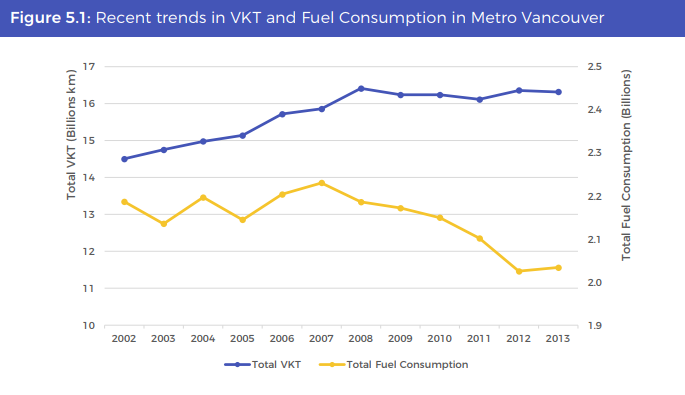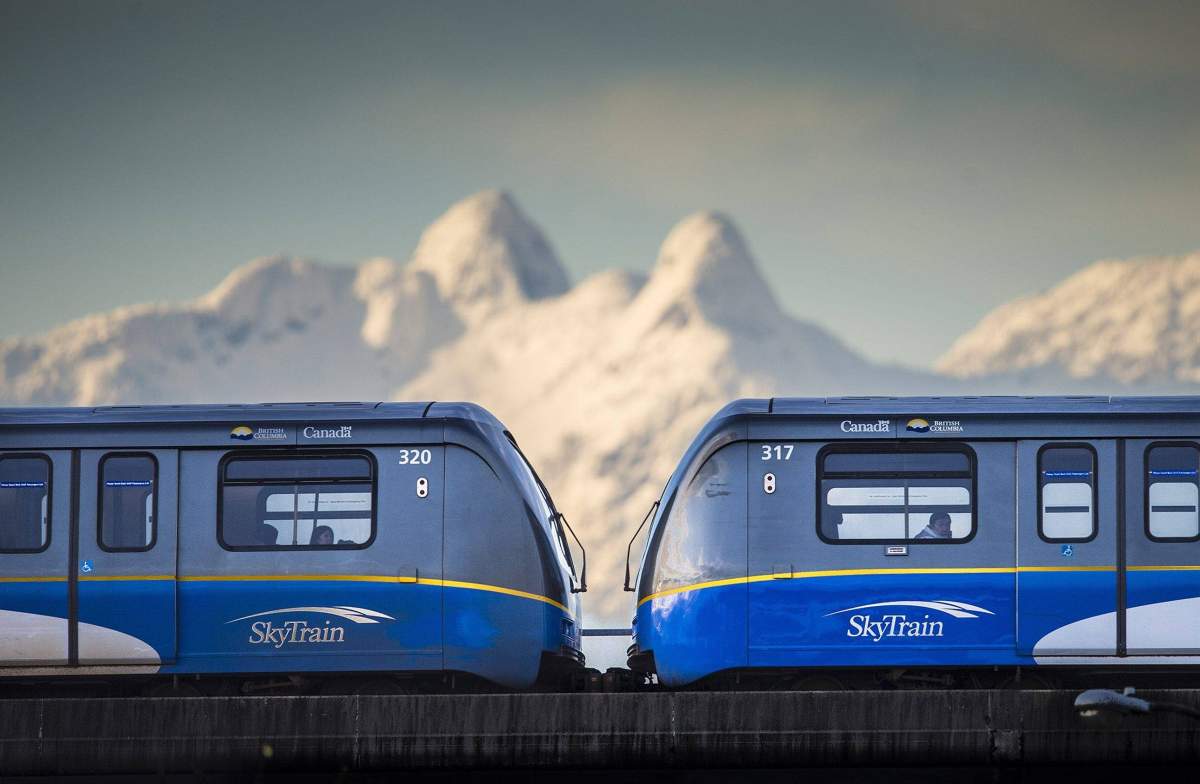Metro Vancouver is a region that’s set to see its current population of about 2.5 million people grow by as many as 1 million by 2045.

That’s about the population of the City of Edmonton, or “one packed city bus every day from now until 2045,” according to a report from an independent commission released Wednesday that looks at the implications of mobility pricing being applied in the Vancouver area.
Coverage of Vancouver traffic on Globalnews.ca:
The Mobility Pricing Independent Commission is a body that has been struck to recommend ways to “improve our current approach to pricing roads and bridges,” according to TransLink.
Mobility pricing is a system used by cities around the world including London, Stockholm, Singapore and Milan, that includes numerous means for charging for use of the transportation system.
Commission members will focus largely on “congestion charging,” which can take the form of anything from tolls to congestion fees, and distance-based and time-based fees.
The commission is starting a public engagement process on Thursday, and is expected to report back to TransLink’s board of directors and the Mayors’ Council on Regional Transportation in April 2018.
On Wednesday, the commission released a new report titled “Moving around Metro Vancouver: Exploring New Approaches to Reducing Congestion.”
The document looks at the current traffic situation in Metro Vancouver, and how new approaches to mobility pricing could help to pay for improvements to the region’s transportation system.
The commission identified eight “congestion hot spots” that it considered among the worst in the region:
- Fraser River bridge and tunnel crossings: this includes crossings such as the Pattullo Bridge, the Port Mann Bridge, the Alex Fraser-Queensborough bridge corridor and the Massey Tunnel
- Crossings between Richmond, the airport and Vancouver: these hot spots tend to see congestion in both directions in the morning and at night, the report said
- Major streets in Vancouver and western Burnaby: traffic in these areas is choking bus corridors, according to the report
- Urban centres such as New Westminster, Metrotown, Surrey City Centre and Richmond City Centre: these areas have seen heavy population growth; continuing growth could continue to create difficulties for bus passengers and drivers, the report noted
- The North Shore in every direction: the Lions Gate Bridge and the Second Narrows Bridge are seeing “constrained capacity,” but there’s also a “limited number of opportunities for east-west travel”
- Travel to and from the northeast: this area referred to Coquitlam, Port Coquitlam and Port Moody, which have a limited number of roads due to parks and geography, the report said
- Highway 1 and Highway 91: Vancouver, the commission noted, has “fewer highways than many other cities in North America,” and that means the few there are have been clogged up not just with commuter traffic, but trucks heading to the airport and the port
- The Downtown Vancouver core: the area is home to 20 per cent of the region’s employment and commuters travelling from the North Shore often have to travel through the core to get elsewhere

Get daily National news
Metro Vancouver is set to see numerous transportation improvements that could better provide commuters with more options than the road.
They include the westward extension of the Millennium Line along Broadway in Vancouver, new light rail transit (LRT) in Langley and Surrey, new SkyTrain cars, a new SeaBus and new B-line bus services.
But even with these improvements, congestion could improve in some areas and times and worsen in others, the report noted.
This table projects how congestion could change by 2045:

The report included an Ipsos survey on traffic bottlenecks taken from 1,000 people throughout Metro Vancouver from Sept. 12 to 19.
It found that 89 per cent are frustrated with traffic delays that have been created by high volume on the roads, while 81 per cent said they lose time every week due to transportation delays.
As many as 62 per cent indicated that it would be a good idea to look at changes to mobility pricing in the region, and 60 per cent would like to know how much they’re spending on moving around, the survey said.
READ MORE: Metro Vancouver mayor’s council sets up commission to introduce mobility pricing for drivers
The report noted one major potential benefit of mobility pricing: a new source of funding for key transportation improvements that could reduce congestion in certain areas.
Phase 1 of TransLink’s 10-Year-Vision has been funded, and regional officials hope to use carbon tax revenues to fund Metro Vancouver’s portion of Phase 2, which includes the Pattullo replacement as well as construction of the Broadway subway.
However, Phase 3, which includes improvements like more bus, rail and HandyDART service, hasn’t been funded. And the commission suggested that mobility pricing could be the way that regional governments pay their share.
Mobility pricing could also be a way to bring in more money at a time when fuel tax revenues are declining, the report noted.
Fuel tax revenues have so far been a steady source of funding, bringing in as much as $340 million per year.

But a graph attached to the report showed that rates of fuel consumption and vehicle kilometres travelled (VKT) have decoupled, suggesting that more people could be using electric vehicles.
The Mobility Pricing Independent Commission’s public engagement process will wrap up in the spring of 2018.













Comments